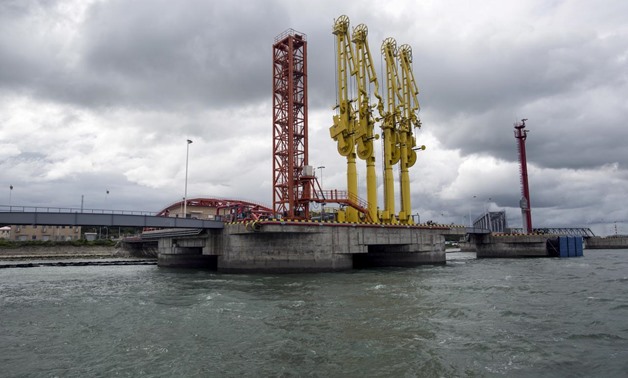
FILE PHOTO: A jetty for oil tankers is seen on Madae island, Kyaukpyu township, Rakhine state, Myanmar October 7, 2015. REUTERS/Soe Zeya Tun/File Photo
SINGAPORE - 21 November 2018: Oil bounced by more than 1 percent on Wednesday to claw back some of the previous day’s 6-percent plunge, lifted by a report of an unexpected decline in U.S. commercial crude inventories and record Indian crude imports.
But investors remained on edge, with the International Energy Agency (IEA) warning of unprecedented uncertainty in oil markets due to a difficult economic environment and political risk.
International Brent crude oil futures LCOc1 were at $63.39 per barrel at 0747 GMT, up $86 per barrel, or 1.4 percent, from their last close.
U.S. West Texas Intermediate (WTI) crude futures CLc1, were up 90 cents, or 1.7 percent, at $54.33 a barrel.
Wednesday’s rebound came after a report by the American Petroleum Institute late on Tuesday that U.S. commercial crude inventories last week fell unexpectedly by 1.5 million barrels, to 439.2 million, in the week to Nov. 16.
Record crude imports by India of almost 5 million barrels per day (bpd) also supported prices, traders said.
Yet Wednesday’s bounce did little to reverse overall market weakness, which saw crude tumble by more than 6 percent the previous session amid a selloff in global stock markets.
“The global economy is still going through a very difficult time and is very fragile,” IEA chief Fatih Birol said on Tuesday.
U.S. investment bank Goldman Sachs said on Wednesday the renewed price collapse reflected “concerns over excess supply in 2019... (and) a broader cross-commodity and cross-asset sell-off as growth concerns continue to mount”.
With output surging and the demand outlook deteriorating, the Organization of the Petroleum Exporting Countries (OPEC) is pushing for a supply cut of between 1 million and 1.4 million bpd to prevent a repeat of the 2014 glut.
“We would anticipate further weakness until the reaction from OPEC+ (Dec. 6) and the G20 summit is clearer (Nov. 30/Dec. 1),” said Ashley Kelty, oil analyst at investment bank Cantor Fitzgerald Europe.
OVERSUPPLY
Despite an expectation of OPEC-led cuts, Brent and WTI prices have slumped by 28 and 30 percent respectively since early October, and the entire structure of the forward price curve has changed.
The Brent forward curve <0#LCO:> was in steep backwardation in October, implying a tight market with prices for spot delivery higher than those for later dispatch. This makes it unattractive to store oil.
Since then, however, the curve has moved into contango for most of 2019, implying oversupply as higher prices further out make it attractive to store oil for later sale.
“A recovery in prices will ... require that the Brent forward curve returns into backwardation from its sudden and significant flattening,” Goldman said.
James Mick, energy portfolio manager with U.S. investment firm Tortoise, said “part of the supply issue has been surging U.S. production”.
U.S. crude oil output C-OUT-T-EIA has jumped by almost a quarter this year, to a record 11.7 million bpd largely because of a surge in shale output.


Comments
Leave a Comment